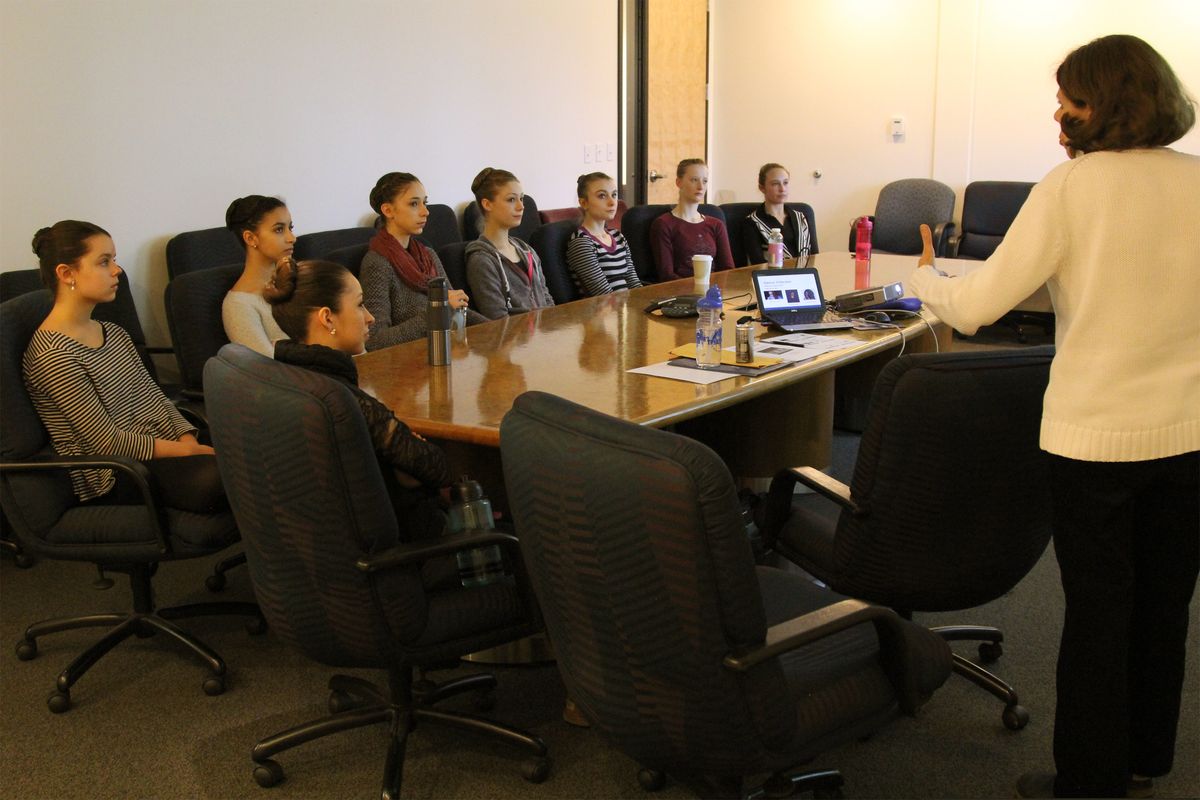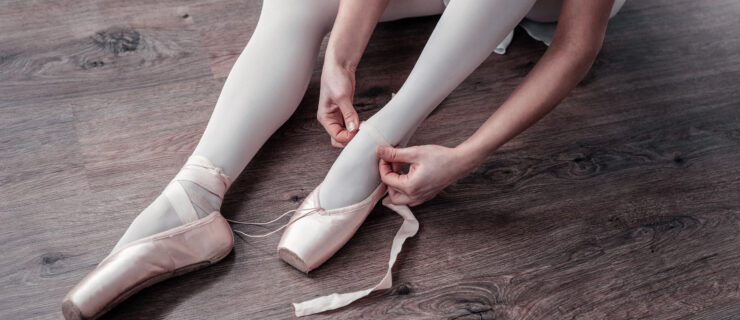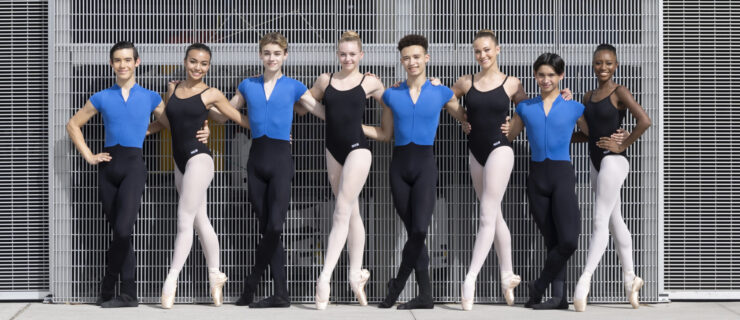Beyond Ballet Class: Enrichment Courses Give Dancers Tools for Becoming Well-Rounded Professionals
This story originally appeared in the August/September 2015 issue of Pointe.
When choosing a pre-professional program, many dancers focus on the number of hours they’ll spend training in the studio. But technique is only one ingredient in the recipe for making a professional dancer. To produce well-rounded artists, many ballet schools are expanding their curriculums to include classes in dance history, science, stagecraft and career counseling. “The focus so much now is on technique, but I think it’s important for us to go back and develop ourselves as artists and people,” says Colorado Ballet Academy director Valerie Madonia. The broader knowledge these supplemental classes bring makes dancers more marketable as professionals, and helps distinguish a good dancer from a great artist.
Dance History and Culture
Whether you study Vaganova or Cecchetti technique, understanding ballet’s roots and how the art evolved is important to the development of educated, worldly dancers. Madonia, seeing a big hole in the way dancers are trained, decided to spend an hour out of the studio each week exposing her students to different perspectives of dance and the world. “There is so little time in the studio for dancers to really look at the history and meaning behind the work they are doing,” she says.
Madonia brought in Julie Van Camp, a retired California State University, Long Beach, philosophy professor, to give students a sampler of dance aesthetics. When Colorado Ballet performed Concerto Barocco last season, Van Camp used the ballet as a case study for learning about dance criticism and aesthetic theories. Madonia and Van Camp agree that students need to practice thinking about their art form from different dimensions in order to understand the world they are functioning in.
Understanding ballet’s beginnings, as well as the cultural and political influences that have affected it throughout the centuries, also helps to inform artistry. For instance, interactive dance history classes offered at Miami City Ballet School allow students to practice movements from different historical periods. They learn about how Louis XIV’s stance shown in paintings is an early third position, and how ballet’s aesthetic lines changed as skirts shortened in order to show off intricate footwork. “For them to understand why they do what they do and where it came from helps with technical ability,” says MCBS school director Darleen Callaghan.
Stagecraft
 Kirov Academy of Ballet students in stagecraft class. Photo Courtesy Kirov Academy.
Kirov Academy of Ballet students in stagecraft class. Photo Courtesy Kirov Academy.
Students interested in choreographing or directing benefit from knowing the technical aspects of putting on a production, running rehearsals and managing a company. But rarely do they get hands-on opportunities to learn these skills. Enrichment courses designed to take dancers behind the scenes can help bridge that gap.
In Introduction to Stagecraft and Design at the Kirov Academy of Ballet in Washington, DC, dancers learn about costumes, lighting and sound designs from Noel Greer, a professional stagehand who works in many DC-area theaters. “When students start choreographing, we find that they don’t know how to light a stage and how to communicate with the lighting designer,” says Kirov Academy artistic director Adrienne Dellas Thornton. The class allows them to practice putting on productions in the academy’s theater. “You see them start to look at the theater differently,” she says.
Dance Science and Nutrition
Since a dancer’s body is her instrument, knowing how it functions and how to take care of it can help maximize performance and prevent injury. Dance science courses give students the necessary tools for a healthy career.
In the nutrition lectures offered at MCBS, dancers learn how to fuel their bodies and grocery shop on a budget. “Their diet and how they are supporting their bodies is as important as their technical training,” says Callaghan, especially since many pre-professional students are living away from home for the first time and learning to cook for themselves. Sometimes MCB principal dancers talk to the students about how they eat to sustain their energy for rehearsals and performances. “It sits in their minds a little better when they hear it from one of the principals than if they hear it from me or their moms,” says Callaghan.
At the Kirov Academy, pre-professional students are required to take a Dance Science and Principles of Movement class. Taught by George Washington University professor Irina Wunder, students learn to visualize the inner workings of the muscles and how they create movement. “Understanding the actual source of movement in the body helps them comprehend how their instruments work and gain an even greater respect for their art,” says Thornton.
Career Counseling
 Kirov Academy students in dance history class. Photo Courtesy Kirov Academy.
Kirov Academy students in dance history class. Photo Courtesy Kirov Academy.
While getting a job is a pre-professional dancer’s ultimate goal, technique class doesn’t prepare them for the stress that comes with auditioning, signing contracts and moving to a new city. That’s where career-oriented classes come in. For instance, at MCBS, graduating students learn how to write resumés and cover letters, as well as research companies around the world. “It was a comfort to know that if it didn’t work out at Miami, I’d have a package that I can send out to other companies,” says MCB corps member Ellen Grocki, a graduate of the school.
In career counseling classes at the Kirov Academy, dancers learn about a variety of topics related to professional life, including how unions work, how to research housing and how to come up with a budget. “It gave me an idea of what to expect when I made the transition from student to professional,” says alumna Megan Amanda Ehrlich, who danced at San Francisco Ballet.
And that added knowledge ultimately makes dancers more marketable. “The more you know as a dancer,” says Madonia, “the more you have to offer as an artist.”





